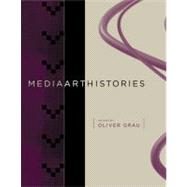
Note: Supplemental materials are not guaranteed with Rental or Used book purchases.
Purchase Benefits
What is included with this book?
| Series Foreword | p. ix |
| Acknowledgments | p. xi |
| Introduction | p. 1 |
| The Coming and Going of Images | p. 15 |
| Origins: Evolution versus Revolution | p. 19 |
| It is Forbidden Not to Touch | p. 21 |
| Some Remarks on the (Forgotten Parts Of The) History of Interactivity and Virtuality | |
| Historicizing Art and Technology | p. 43 |
| Forging a Method and Firing a Cannon | |
| Twin-Touch-Test-Redux | p. 71 |
| Media Archaeological Approach to Art, Interactivity, and Tactility | |
| Duchamp: Interface: Turing | p. 103 |
| A Hypothetical Encounter Between the Bachelor Machine and the Universal Machine | |
| Remember The Phantasmagoria! | p. 137 |
| Illusion Politics of the Eighteenth Century and Its Multimedial Afterlife | |
| Islamic Automation | p. 163 |
| A Reading of Al-Jazari's the Book of Knowledge of Ingenious Mechanical Devices (1206) | |
| Machine--Media--Exhibition | p. 179 |
| The Automatization of Figurative Techniques | p. 181 |
| Toward the Autonomous Image | |
| Image, Process, Performance, Machine | p. 193 |
| Aspects of an Aesthetics of the Machinic | |
| From Film to Interactive Art | p. 207 |
| Transformations in Media Arts | |
| The Passage From Material to Interface | p. 229 |
| The Myth of Media Immateriality | p. 251 |
| Presenting and Preserving New Media | |
| Pop Meets Science | p. 275 |
| Device Art | p. 277 |
| A New Approach in Understanding Japanese Contemporary art Media | |
| Projecting Minds | p. 309 |
| Abstraction and Complexity | p. 339 |
| Making Studies in New Media Critical | p. 355 |
| Image Science | p. 381 |
| Image, Meaning, And Discovery | p. 383 |
| There are no Visual Media | p. 395 |
| Projection | p. 407 |
| Vanishing and Becoming | |
| Between a Bach and a Bard Place | p. 423 |
| Productive Constraint in Early Computer Arts | |
| Picturing Uncertainty | p. 453 |
| From Representation to Mental Representation | |
| Contributors | p. 469 |
| Table of Contents provided by Publisher. All Rights Reserved. |
The New copy of this book will include any supplemental materials advertised. Please check the title of the book to determine if it should include any access cards, study guides, lab manuals, CDs, etc.
The Used, Rental and eBook copies of this book are not guaranteed to include any supplemental materials. Typically, only the book itself is included. This is true even if the title states it includes any access cards, study guides, lab manuals, CDs, etc.